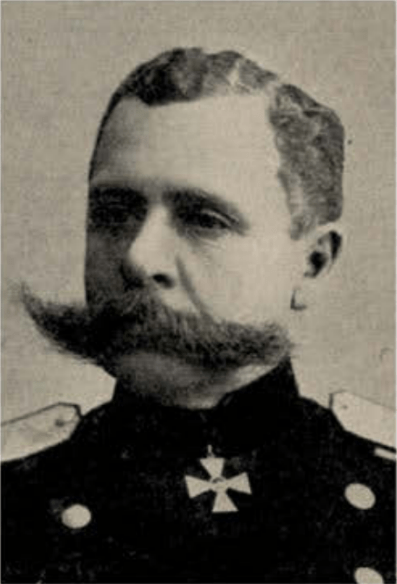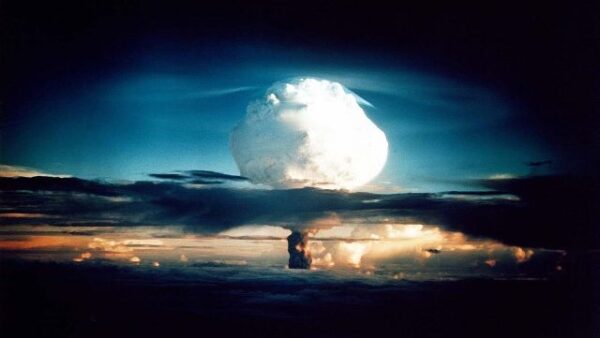The Battle of Tannenberg – THU 20 AUG 1914 –FRI 28 AUG 1914
Russians go on the offensive
In August 1914, Germany faced the nightmare of fighting on two widely- separated fronts. The Schlieffen Plan took a chance that Russia would not overwhelm Germany in the east before it destroyed France in the west. The assumption was that the “Russian steamroller” would mobilize slowly, allowing for the rapid movement of massive forces from France by rail. But the Russian mobilization proved to be surprisingly swift, and in mid-August two armies struck against East Prussia.
The German plan was unravelling. Before the Russian advance into East Prussia, Maximilian von Prittwitz, the commander of the German Eighth Army, had planned to retreat. However, on August 20, 1914, Hermann von François, an aggressive corps commander, fought Paul von Rennenkampf’s Russian First Army near Gumbinnen. Following their initial success, the Germans experienced a forced retreat, and Prittwitz’s resolve wavered.


Fearing that he was about to be encircled by Alexander Samsonov’s Russian Second Army, he ordered a retreat that would have meant abandoning large tracts of East Prussia. He was promptly sacked by Moltke, and a retired general, Paul von Hindenburg, was sent to replace him, with Erich Ludendorff, who had recently come to prominence at the siege of Liège, as his chief-of-staff.
In spite of their success, the Russians were facing severe problems. The strategic challenges of coordinating enormous armies across multiple fronts across hundreds of miles would have taxed the most efficient general staff in the world, and the Russian army’s was far from that. Poor development of the infrastructure in the Russian Empire led to significant logistical challenges.

The Battle of Tannenberg
German Offensive and Russian Disarray
One of the attractions of invading East Prussia was that it was rich territory, but the presence of the Augustów Forest and the Masurian Lakes forced the Russians to split their forces to move either side of these two awkward obstacles in the border area, as a result of which they could not offer mutual support. Two factors exacerbated this problem. First, Russian communications were primitive even by 1914 standards. By default, this devolved much responsibility to formation commanders, limiting the influence of the commander-in-chief, Grand Duke Nicholas, on the East Prussian campaign once it had commenced.
Moreover, the highest echelons of the Russian officer corps was riven with factionalism. Unfortunately, Samsonov and Rennenkampf were bitter rivals, and there was no effective overall commander to keep them all in check. Alerted that Rennenkampf had failed to capitalize on his success, the new German command team – and Colonel Max Hoffman of Eighth Army – saw the opportunity to win an offensive battle of manoeuvre by attacking Samsonov, who was pushing forward, oblivious to any possible German threat.
On 27 August, the Germans struck. The Germans outflanked Samsonov’s army, cutting the roads. Rail transport facilitated the movement of François’s I Corps around the Russian left. XX Corps fixed Samsonov to the front, and XVII Corps marched around the Russian right flank. It was a classic example of the favourite German operational gambit of encircling the enemy.

Tactical Triumph
“The Germans knew that Rennenkampf would not be able to support his rival because the Russians sent unencoded radio messages, indicating he was marching away from Samsonov.” The German assault achieved surprise, and on 28 August Samsonov tried to retreat. But the Russians found themselves facing enemy forces on three sides.
Many soldiers experienced demoralization, leading to the rapid disintegration of the army. Faced with catastrophe, Samsonov consequently committed suicide. Tannenberg was a great German victory. For fewer than 20,000 losses, the Germans inflicted losses of 130,000, including 100,000 prisoners. Despite the failure of the Schlieffen Plan, the Germans managed to halt the Russian threat to East Prussia and gained the initiative in the East. And in Hindenburg meanwhile, Germany had a new hero.

Originally posted 2023-10-16 13:01:13.




